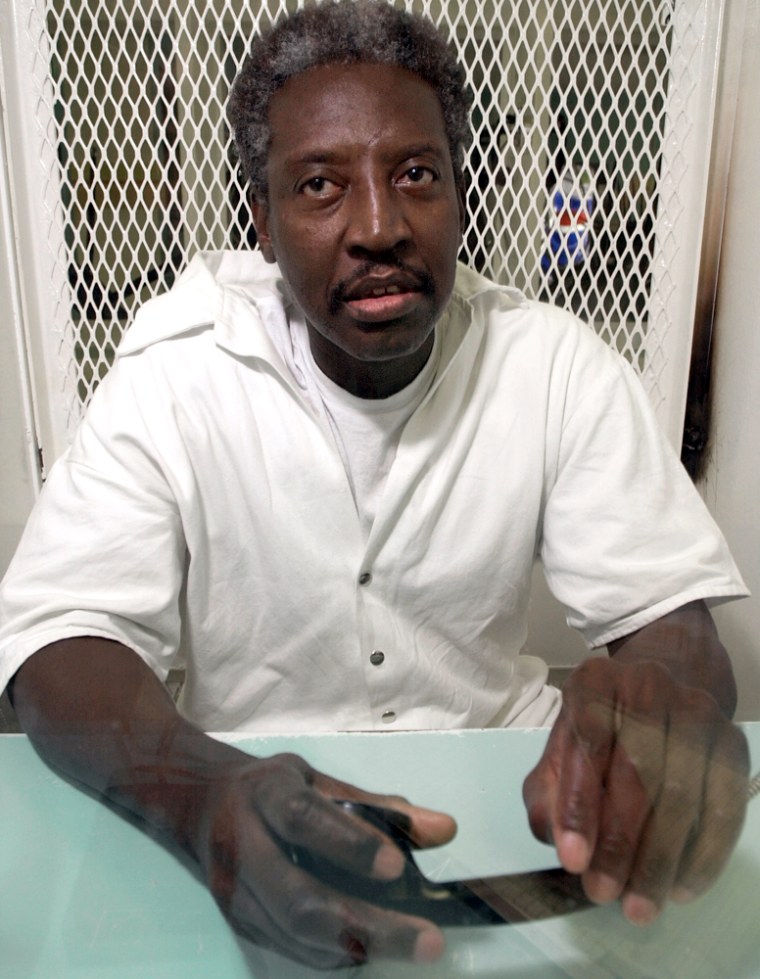The Supreme Court on Monday overturned the conviction of a black death row inmate who said Texas prosecutors unfairly stacked his jury with whites, issuing a harsh rebuke to the state that executes more people than any other.
The 6-3 ruling ordered a new trial for Thomas Miller-El, who challenged his conviction for the 1985 murder of a 25-year-old Dallas motel clerk. It was the second time justices reviewed the case after a lower court refused to reconsider Miller-El’s claims.
The 5th U.S. Circuit Court of Appeals in New Orleans was wrong to reaffirm the conviction in light of the strong evidence of prejudice, justices said.
The state court’s conclusion that the prosecutors’ strikes of people from the jury pool was “not racially determined is shown up as wrong to a clear and convincing degree; the state court’s conclusion was unreasonable as well as erroneous,” Justice David Souter wrote for the majority.
Jury pool 'shuffled,' Souter says
In the opinion, Souter noted that black jurors were questioned more aggressively about the death penalty, and the pool was “shuffled” at least twice by prosecutors, apparently to increase the chances whites would be selected.
He was joined by Justices John Paul Stevens, Sandra Day O’Connor, Anthony Kennedy, Ruth Bader Ginsburg and Stephen Breyer.
“The prosecutors’ chosen race-neutral reasons for the strikes do not hold up and are so far at odds with the evidence that pretext is the fair conclusion, indicating the very discrimination the explanations were meant to deny,” Souter wrote.
“At least two of the jury shuffles conducted by the state make no sense except as efforts to delay consideration of black jury panelists,” Souter said, adding that it “blinks reality” to deny jurors were struck because they were black.
Thomas, Scalia, Rehnquist in minority
In a dissent, Justice Clarence Thomas argued that Texas prosecutors had offered enough evidence that exclusions were made for reasons other than race.
For instance, the state’s explanation that jurors were struck based on their hostility to the death penalty is plausible, and the alleged racial motivation behind prosecutors’ decision to shuffle the jury pool is only speculative, wrote Thomas, the court’s only black member.
“In view of the evidence actually presented to the Texas courts, their conclusion that the state did not discriminate was eminently reasonable,” Thomas wrote in an opinion joined by Chief Justice William Rehnquist and Justice Antonin Scalia.
Oral arguments last December
When the Supreme Court heard arguments in the case last December, Breyer noted the high court’s 8-1 opinion in 2003 had found a “strong suspicion” of discrimination.
“I’m reading the opinion and thinking, unless something changes here, this is something bad, this is discriminatory,” Breyer said. “Is there something different found in the 5th Circuit that wasn’t here the last time?”
Scalia countered that the lower court was only obligated to reconsider the conviction, not reverse it, since Texas prosecutors had offered enough evidence that exclusions were made for reasons other than race.
“The fact was, the degree of hostility by the black jurors to the death penalty was quite high. If there is a different attitude of the black jurors than to the white jurors, you can’t fault prosecutors for striking more of the black jurors,” Scalia said.
Prosecution manualsMiller-El contends that Dallas County prosecutors had a long history of excluding black prospects from juries, and pointed to training manuals that were distributed to prosecutors from the 1960s into the early 1980s. The manuals advised prosecutors to remove blacks or Jews from death penalty juries on the theory that those groups would be more sympathetic to criminal defendants.
At trial, he was convicted by a 12-member jury that included one black juror. Prosecutors struck nine of the 10 black people eligible to serve.
During oral arguments, the high court’s liberal wing — Stevens, Souter and Ginsburg — pressed Texas assistant attorney general Gena Bunn on why prosecutors marked jury cards with notes or “cues” on race or signs of religious affiliation, such as facial hair or weight.
“Is it not a fair inference the cues were something the prosecutors considered relevant; and, if so, isn’t it uncontroverted evidence that was a reason for exclusion?” Stevens asked.
When Bunn responded that prosecutors were trying to avoid an all-white jury that could be challenged in court, a skeptical-sounding Souter cut in.
“Does that relate to weight and mustaches?” he asked. The cues “were all correlating to a manual that says, ‘keep these people off the jury.’ Doesn’t that lead to a reasonable inference that was what they were trying to do?”
Other Texas cases overturned
Earlier in 2004, the Supreme Court overturned two Texas death sentences because jurors were not told of the defendants’ learning disabilities. They were LaRoyce Lathair Smith, convicted for the 1991 killing of a Taco Bell manager in Dallas, and Robert Tennard, charged with killing a Houston neighbor in 1985.
In February, the court lifted Delma Banks’ death sentence and delivered a strong criticism of Texas officials and lower courts, saying prosecutors hid crucial information that might have helped Banks’ case.
Justices in 2003 issued stinging reversals in three cases involving Texas death penalty convictions on various grounds, a striking number for a conservative-leaning court that generally favors capital punishment. All the cases involved black defendants.
Since capital punishment was reinstated in 1976, Texas has executed more than one-third of 943 people put to death in the United States.
